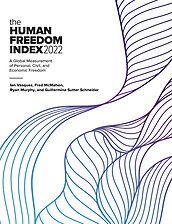The Human Freedom Index (HFI) presents a broad measure of human freedom, understood as the absence of coercive constraint. This 10th annual index uses 86 distinct indicators of personal and economic freedom in the following areas:
Human Freedom Index
Human Freedom Index





